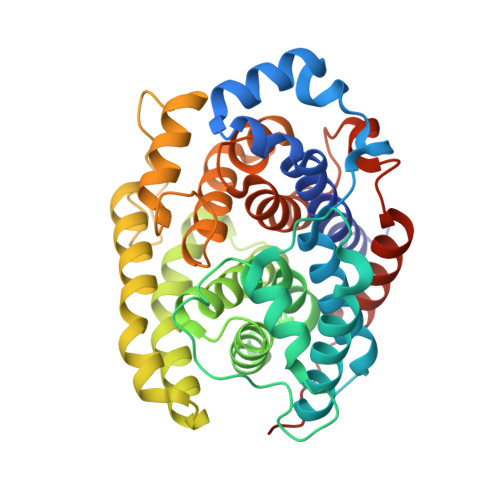(ADP-ribosyl)hydrolases: Structural Basis for Differential Substrate Recognition and Inhibition.
Rack, J.G.M., Ariza, A., Drown, B.S., Henfrey, C., Bartlett, E., Shirai, T., Hergenrother, P.J., Ahel, I.(2018) Cell Chem Biol 25: 1533-1546.e12
- PubMed: 30472116
- DOI: https://doi.org/10.1016/j.chembiol.2018.11.001
- Primary Citation of Related Structures:
6G1P, 6G1Q, 6G28, 6G2A, 6HGZ, 6HH3, 6HH4, 6HH5, 6HH6, 6HOZ - PubMed Abstract:
Protein ADP-ribosylation is a highly dynamic post-translational modification. The rapid turnover is achieved, among others, by ADP-(ribosyl)hydrolases (ARHs), an ancient family of enzymes that reverses this modification. Recently ARHs came into focus due to their role as regulators of cellular stresses and tumor suppressors. Here we present a comprehensive structural analysis of the enzymatically active family members ARH1 and ARH3. These two enzymes have very distinct substrate requirements. Our data show that binding of the adenosine ribose moiety is highly diverged between the two enzymes, whereas the active sites harboring the distal ribose closely resemble each other. Despite this apparent similarity, we elucidate the structural basis for the selective inhibition of ARH3 by the ADP-ribose analogues ADP-HPD and arginine-ADP-ribose. Together, our biochemical and structural work provides important insights into the mode of enzyme-ligand interaction, helps to understand differences in their catalytic behavior, and provides useful tools for targeted drug design.
Organizational Affiliation:
Sir William Dunn School of Pathology, Oxford University, South Parks Road, Oxford OX1 3RE, UK.


















